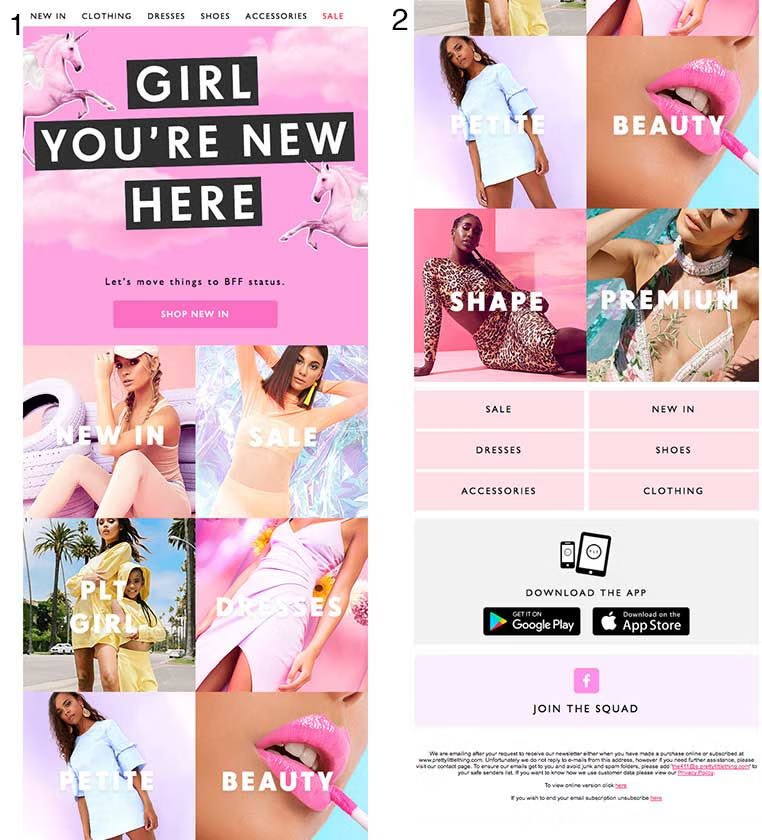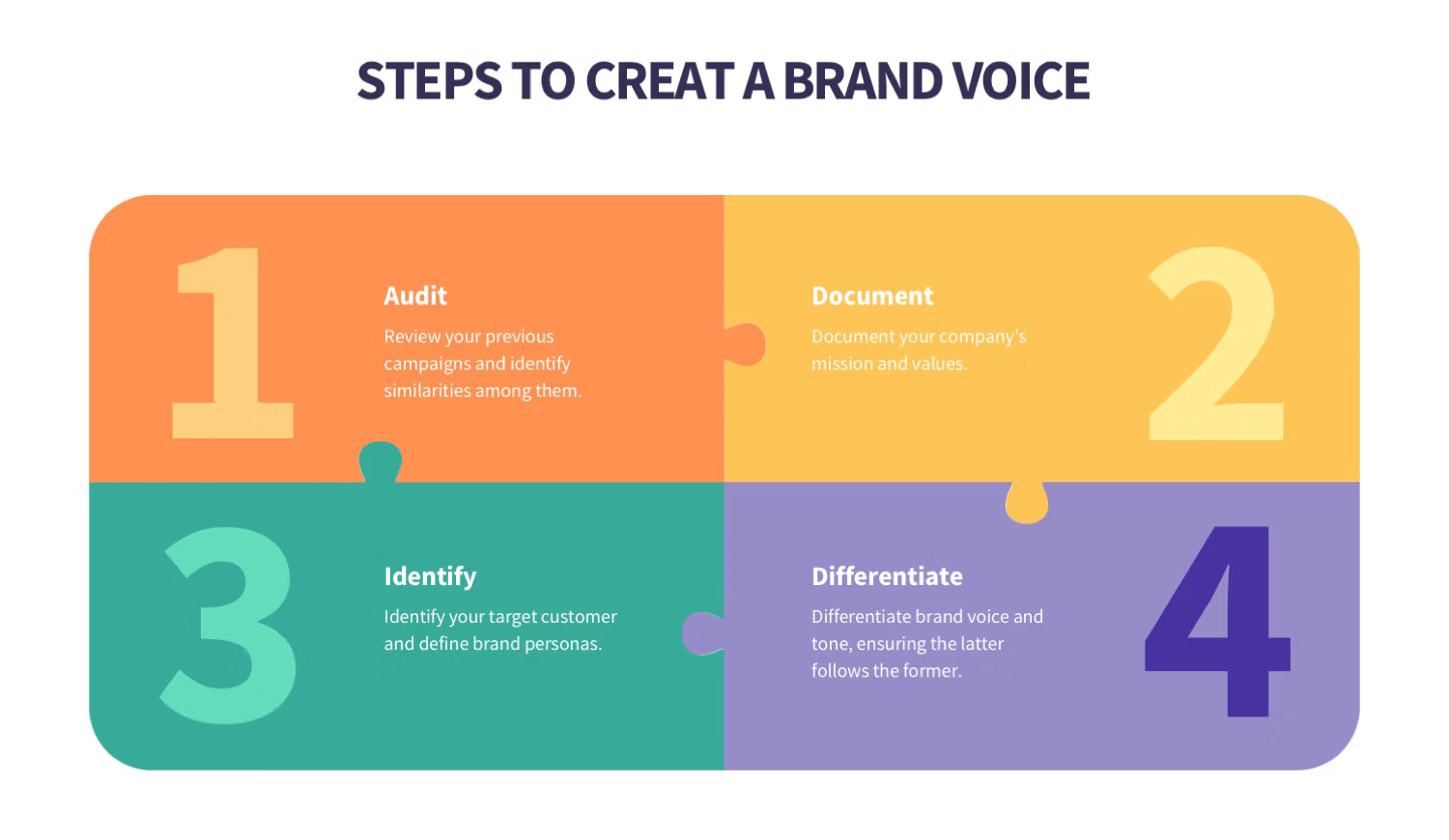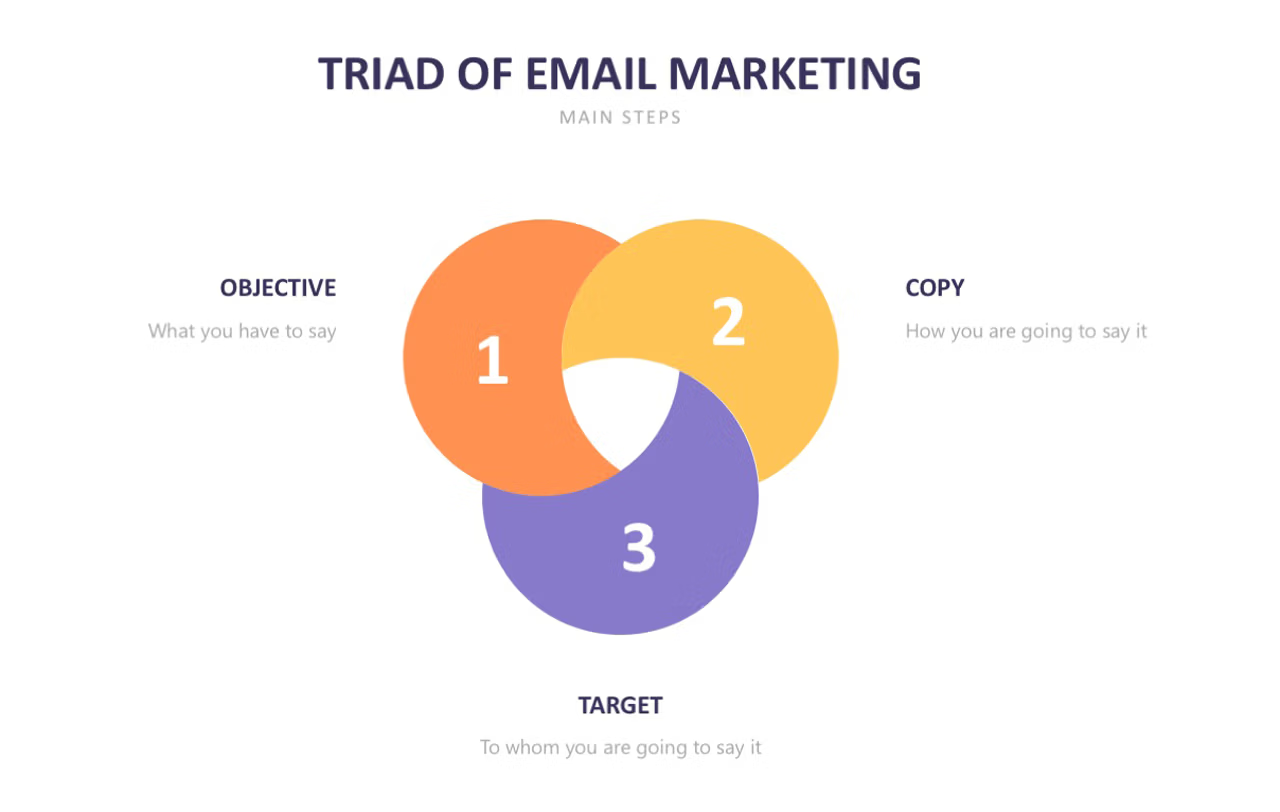How To Create a Brand Voice and Use It in Your Email Campaigns
Updated June 3, 2021
6 min read

When reflecting on how customers view your company, it’s common to think about visual communication: logo, colors, and design. However, there is another important aspect of building brand identity: your brand voice. Your brand voice is becoming increasingly important as businesses rely more and more on digital marketing. This blog post will help you create a brand voice unique to your company.
Whether you realize it or not, every brand has its own unique voice. Let’s imagine a teen clothing brand, for example. In terms of language, this brand is likely to use an informal tone, which makes the public identify with the company and become more comfortable in building a relationship with it. A great example here is PrettyLittleThing.
 That is exactly what you should establish in your email marketing: find your tone and your own brand voice to convey to the public. But how to create a brand voice? Let’s dive deep into it!
That is exactly what you should establish in your email marketing: find your tone and your own brand voice to convey to the public. But how to create a brand voice? Let’s dive deep into it!What is Brand Voice?
Brand voice is the personality your company expresses in your communications. Think about a person telling a story. Have you noticed that if more than one person tells the same story, they add their own, unique personality into the narrative?
It’s the same when it comes to creating a brand voice. Your brand voice is the personality your company portrays when telling stories, through email or social media. As the narrative personality is linked to who the person is, your brand voice has to be linked to who your company is. As you establish your brand voice, it is essential that you keep your voice consistent throughout all communication channels.
Why is your brand voice important?
The digital environment is full of companies fighting for their customer’s attention. When it comes to email marketing, it’s highly competitive. In 2020, over 306 billion emails were sent daily, which means that your leads received tons of messages every day, and most of them weren’t even opened. Your content needs to stand out to get a customer to interact with your emails.
In a survey of customers, 40% of participants said that memorable content is the main differential of memorable companies. 33% of participants said the personality of the brand is essential, and 32% said that having a powerful story is what makes a company stand out among others.
A commonality amongst these statistics is the brand voice. After all, good content is not only about images but also about the words and tone you use. You want your brand to be memorable and recognizable, and having a well-defined personality is the best way to achieve that.
How to create a brand voice that works for your company
Having a well-defined brand voice is important, but how do you know the tone you want to set for your company? Here are some tips that will help.
 1 - Perform an audit of your current brand voice
1 - Perform an audit of your current brand voice
If you already have an ongoing email marketing strategy, look back at your previous messages. What is the tone are you using? You may notice some inconsistencies. That can happen for many reasons, such as using different copywriters or different themes.
But, don’t worry. Inconsistencies are normal and can help you identify the emails that had the best results. Try to find similarities among them, as it will give you a starting point to identify your brand voice.
2 - Document your brand voice
Your brand has an identity manual, and your brand voice needs one, too. If you don’t have one yet, put your company’s mission and values together: this will help identify your brand voice.
The brand voice will be used not only by your marketing team but also by other departments in your company. Every point of contact with your customers must reflect the brand voice, and having it documented will help serve as a guide.
3 - Identify the personas and public
To set a brand voice, you must know who your customers are. If you already have an email marketing campaign, you probably have your customer well defined (a buyer persona is a fictional representation of your customer’s profile).
If we refer back to the teen clothing brand example, the persona of that brand could be a 15 year old girl, named Alice, who enjoys listening to K-pop music and follows trends launched by artists. She is extroverted and sees her clothes as a way to express her personality.
This is a brief example of what a brand persona should describe. Yours might involve an extensive survey about your customers, their habits, and other information that will help you to set the tone in communicating with them.
4 - Know how to differentiate your tone
Two key points that need to be emphasized when planning your email marketing communication: brand voice and voice tone.
As previously discussed, your brand voice is your company’s personality, and learning how to create a brand voice also involves tone. Your tone, on the other hand, is the way you say a specific thing. There are different ways to say something, and your tone can differentiate with the content of the email. You can be more friendly when writing a birthday email, while you might be more formal when announcing a recall, for example. Or you can also create a branded t-shirt design, use the power of billboard ads, and other methods to share your brand voice. Despite the tone, your voice should remain the same.
Beyond the creation of a brand voice: how to stand out in your customer’s inbox?
Your company’s brand voice should be felt in all of your emails. However, it is not the only factor that will make your campaigns successful.
Let’s briefly define the traditional steps of an email campaign:
 Considering that the first two points are already well-known by marketers, we need to look carefully at what comes next.
Considering that the first two points are already well-known by marketers, we need to look carefully at what comes next.There are fundamental steps after the definition of what and how to convey in your email marketing.
1 - The objective of a campaign
Defining the goal of a campaign is the first and the most intuitive step of any strategy. The goal is nothing more than what your company wants to achieve, or the reason why your campaign is being sent out in the first place. While reasons vary, and the most common ones include:
- Increase in sales
- Promoting upsell
- Improving customer relationships
Each campaign has its goal, and defining your goal will lay a foundation for the next steps.
2 - Creating copy after setting a brand voice
Your goal is to stand out with rich, unique, and creative content that will lead your audience to act in line with your objective. This is where you get to put your brand voice into action.
The copy of your email campaigns is directly linked to the goal you defined and also to step 3.
3 - Targeting is more than you think
Customer segmentation is critical to the success of every marketing digital strategy. Email marketing is no different.
By targeting, we consider the analyses of your customer database to guide the content according to customer interest. You can segment many different ways, including geolocalization, language, purchase history, etc.
Depending on how you target, your campaigns can use different strategies. For example, a last-minute offer campaign can have 2 or 3 emails, while another one that seeks engagement with the customer can have more triggers.
It is important to allocate time to targeting your audience, as a well-targeted campaign can increase your open rates by up to 203%.
Email Validation in your targeting process
Email validation during your targeting process is the key to increasing open and conversion rates, and ensuring that your domain will not be harmed.
When you send out mass emails to your database without checking if the emails on your list are valid, you risk your sender reputation and can experience increased bounces.
It is a ripple effect. If you send out emails to addresses that don’t exist, your messages will begin to end up in the spam folder. This affects the customers that were ready to purchase from you as they won’t receive your messages, harming your open and conversion rates.
The good news is, you can prevent this from happening by verifying your email lists.
As we saw, knowing how to create a brand voice that works for your company is an extremely important process, but the success of your email campaigns doesn’t rely on this process alone. To learn more, check out our features that may help you improve your email campaigns’ ROI.